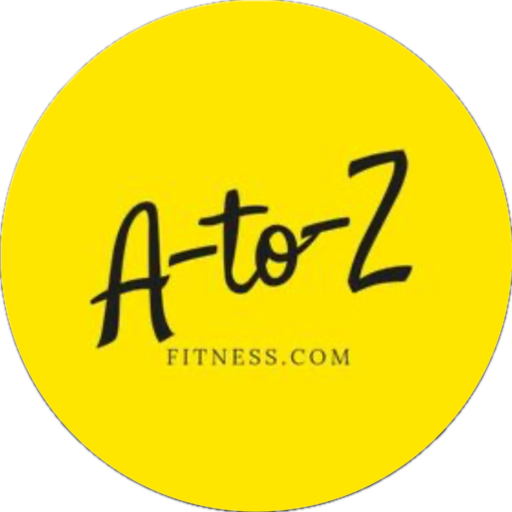In recent years, the popularity of CrossFit has skyrocketed, with millions of people around the world embracing this high-intensity training regimen. Known for its emphasis on functional movements, varied workouts, and a strong sense of community, CrossFit has transformed the way we approach fitness. But what if you can’t make it to a gym? Whether you’re staying home due to convenience, time constraints, or budget considerations, you can still reap the benefits of CrossFit with effective workouts at home. In this comprehensive guide, we’ll explore the world of CrossFit workouts at home. We’ll cover the benefits, provide sample workouts, and dive into the statistics that highlight why CrossFit is one of the most efficient ways to get in shape. Plus, we’ll share tips on how to create a home gym that works for CrossFit training, ensuring that you have everything you need to succeed.

The Rise of CrossFit: A Fitness Revolution
CrossFit is more than just a workout; it’s a lifestyle. Developed by Greg Glassman in the early 2000s, CrossFit combines elements of weightlifting, gymnastics, and high-intensity interval training (HIIT) to create workouts that challenge the body and mind. The key to CrossFit’s success lies in its scalability, making it accessible to people of all fitness levels.
Statistics on CrossFit’s Growth:
- As of 2023, there are over 15,000 CrossFit-affiliated gyms worldwide, a testament to its global appeal.
- A study published in the Journal of Strength and Conditioning Research found that CrossFit participants burned an average of 12 calories per minute, making it one of the most efficient workouts available.
- According to a survey by Statista, approximately 5 million people in the U.S. regularly engage in CrossFit workouts, with many of them opting for home-based routines.
Benefits of CrossFit Workouts at Home
When it comes to getting fit, CrossFit offers a unique blend of benefits that set it apart from traditional workout programs. Here’s why you should consider incorporating CrossFit workouts into your home fitness routine:
- Functional Fitness: CrossFit focuses on movements that mimic real-life activities, such as lifting, pushing, pulling, and squatting. This emphasis on functional fitness improves strength, agility, and endurance, making everyday tasks easier.
- Efficiency: CrossFit workouts, known as WODs (Workouts of the Day), are typically short but intense. Most WODs can be completed in 20-30 minutes, making them perfect for those with busy schedules.
- Scalability: One of CrossFit’s biggest strengths is its adaptability. Whether you’re a beginner or an experienced athlete, CrossFit workouts can be modified to match your fitness level.
- Community and Accountability: While the camaraderie of a CrossFit gym is hard to replicate at home, many online communities and virtual coaching options can help you stay motivated and accountable.
- Variety: CrossFit’s constantly varied workouts ensure that you never get bored. Each day presents a new challenge, keeping your fitness journey exciting and engaging.
Setting Up Your Home Gym for CrossFit
Before diving into CrossFit workouts at home, it’s essential to create a space that accommodates the intensity and variety of these workouts. Here’s how to set up a home gym that works for CrossFit:
- Space: You don’t need a large area, but you do need enough room to move freely. A garage, basement, or even a cleared-out living room can serve as your CrossFit space.
- Equipment: While CrossFit workouts can be done with minimal equipment, having a few key pieces can enhance your experience:
- Jump Rope: Essential for cardio workouts and double-unders.
- Kettlebells: Perfect for swings, snatches, and other strength exercises.
- Dumbbells: Versatile for a wide range of movements.
- Pull-Up Bar: Ideal for pull-ups, toes-to-bar, and muscle-ups.
- Resistance Bands: Great for stretching, mobility work, and adding resistance to bodyweight exercises.
- Plyo Box: Useful for box jumps, step-ups, and other plyometric exercises.
- Mat: Provides cushioning for floor exercises and stretching.
- Technology: Consider using a fitness app or online CrossFit platform to guide your workouts. Many apps offer WODs, video tutorials, and progress tracking, making it easier to stay on track.
Sample CrossFit Workouts at Home
Now that you’re set up, let’s explore some CrossFit workouts that can be done at home with minimal equipment. These WODs are designed to challenge your strength, endurance, and overall fitness.
- Bodyweight WOD:
- 10 Rounds for Time:
- 10 Push-Ups
- 10 Air Squats
- 10 Sit-Ups
- 10 Burpees
- 10 Rounds for Time:
- Equipment-Based WOD:
- AMRAP (As Many Rounds As Possible) in 20 Minutes:
- 10 Kettlebell Swings
- 15 Goblet Squats (using a dumbbell or kettlebell)
- 20 Box Jumps
- 200m Run (or 1 minute of high knees if space is limited)
- AMRAP (As Many Rounds As Possible) in 20 Minutes:
- EMOM (Every Minute on the Minute) WOD:
- 20-Minute EMOM:
- Minute 1: 15 Dumbbell Thrusters
- Minute 2: 10 Pull-Ups (or ring rows)
- Minute 3: 20 Jump Rope Double-Unders
- Minute 4: Rest
- 20-Minute EMOM:
- Partner WOD:
- 5 Rounds for Time (with a partner):
- 400m Run (each)
- 50 Sit-Ups (shared)
- 40 Push-Ups (shared)
- 30 Dumbbell Snatches (shared)
- 5 Rounds for Time (with a partner):
The Science Behind CrossFit Workouts
CrossFit’s success isn’t just anecdotal; it’s backed by science. Numerous studies have demonstrated the effectiveness of CrossFit workouts for improving various aspects of fitness.
1. Improved Cardiovascular Health: A study published in the Journal of Sports Science and Medicine found that participants who engaged in CrossFit experienced significant improvements in their VO2 max, a key indicator of cardiovascular fitness. The high-intensity nature of CrossFit workouts forces the heart to pump more efficiently, leading to better overall heart health.
2. Increased Strength and Muscle Mass: Research published in the Journal of Strength and Conditioning Research shows that CrossFit workouts lead to increased muscle mass and strength, particularly in the lower body. The combination of resistance training and functional movements targets multiple muscle groups simultaneously, promoting balanced muscle development.
3. Enhanced Metabolic Conditioning: CrossFit’s emphasis on high-intensity interval training (HIIT) has been shown to boost metabolic conditioning. A study in the Journal of Applied Physiology found that HIIT workouts, like those in CrossFit, can increase resting metabolic rate (RMR) for up to 24 hours post-exercise, leading to greater calorie burn even at rest.
4. Better Mental Health: In addition to physical benefits, CrossFit has been linked to improved mental health. A study published in Behavioral Sciences found that participants in high-intensity functional training programs, including CrossFit, reported reduced anxiety, depression, and stress levels. The sense of accomplishment after completing a tough WOD can lead to increased self-confidence and a positive mindset.
CrossFit Workouts for Weight Loss
If weight loss is one of your goals, CrossFit can be an effective tool in your fitness arsenal. The combination of strength training and cardiovascular exercise in CrossFit workouts creates the perfect environment for fat loss. Here’s how:
- High-Calorie Burn: The intense nature of CrossFit workouts means you burn more calories in a shorter amount of time. On average, a CrossFit workout can burn between 400-600 calories in just 30 minutes.
- Afterburn Effect: Known as excess post-exercise oxygen consumption (EPOC), the afterburn effect is a key component of CrossFit. After an intense workout, your body continues to burn calories at an elevated rate as it recovers. This effect can last up to 24 hours, making CrossFit a powerful weight loss tool.
- Muscle Preservation: Unlike traditional cardio workouts, which can lead to muscle loss, CrossFit’s emphasis on strength training helps preserve and build muscle mass. Since muscle burns more calories at rest than fat, maintaining muscle mass is crucial for long-term weight loss success.
Staying Motivated with CrossFit at Home
One of the challenges of working out at home is staying motivated. Without the energy of a gym or the encouragement of fellow CrossFitters, it’s easy to lose focus. Here are some tips to keep you motivated:
- Set Clear Goals: Whether it’s improving your time on a specific WOD or achieving a new personal best in a lift, setting clear goals gives you something to strive for.
- Track Your Progress: Use a fitness app or journal to track your workouts, times, and personal records eeing your progress over time can be incredibly motivating and will help you stay committed to your CrossFit journey.
- Join Online Communities: The CrossFit community is one of the most supportive in the fitness world. Joining online CrossFit forums, social media groups, or virtual classes can provide the camaraderie and accountability you need to stay on track. Sharing your achievements and challenges with others who share your passion can make the experience more enjoyable.
- Mix Up Your Workouts: CrossFit is all about variety. If you find yourself getting bored, switch up your routine with different WODs, new movements, or even a different workout structure like EMOM or AMRAP. This constant variation keeps things fresh and prevents plateaus.
- Reward Yourself: Set milestones and reward yourself when you reach them. Whether it’s a new piece of equipment, a healthy treat, or simply a day off, celebrating your achievements is important for maintaining motivation.
- Schedule Your Workouts: Treat your home CrossFit workouts like appointments. Schedule them into your calendar and stick to the plan. Consistency is key to seeing results, and having a set time each day for your workout will help you build a routine.
Nutrition and Recovery for CrossFit Success
CrossFit workouts are intense and require proper nutrition and recovery to ensure you’re performing at your best. Here’s how to fuel your body and recover effectively:
1. Balanced Diet: Your diet plays a critical role in your CrossFit performance. Focus on a balanced diet rich in lean proteins, healthy fats, and complex carbohydrates. Protein is essential for muscle repair and growth, while carbs provide the energy needed for high-intensity workouts. Healthy fats support overall health and provide sustained energy.
2. Hydration: Staying hydrated is crucial, especially during intense CrossFit workouts. Dehydration can lead to decreased performance, fatigue, and even injury. Aim to drink water throughout the day, and consider electrolyte-rich drinks if you’re sweating heavily.
3. Pre-Workout Nutrition: Fuel up before your workout with a meal or snack that includes both protein and carbs. This will provide the energy needed to power through your WOD and support muscle recovery afterward. Examples include a banana with peanut butter, a protein smoothie, or a small bowl of oatmeal with berries.
4. Post-Workout Nutrition: After your workout, your body needs nutrients to recover and rebuild. A post-workout meal or snack rich in protein and carbs will help replenish glycogen stores and repair muscle tissue. Consider options like a protein shake with fruit, grilled chicken with sweet potato, or Greek yogurt with honey and nuts.
5. Sleep and Recovery: Recovery is just as important as the workout itself. Aim for 7-9 hours of quality sleep each night to allow your muscles to repair and grow. Additionally, consider incorporating active recovery days into your routine, where you engage in light activities like walking, stretching, or yoga.
Common Challenges and How to Overcome Them
Working out at home has its own set of challenges. Here’s how to overcome some of the most common obstacles you might face with CrossFit workouts at home:
1. Limited Space: If space is an issue, focus on bodyweight exercises and use compact equipment like resistance bands, dumbbells, or a jump rope. You can also modify movements to fit your available space. For example, if you don’t have room for a 200m run, substitute it with 1 minute of high knees or jumping jacks.
2. Lack of Equipment: CrossFit is known for its versatility, and many WODs can be done with minimal or no equipment. If you don’t have access to kettlebells or dumbbells, you can substitute with household items like water jugs or backpacks filled with books. Bodyweight exercises like push-ups, squats, and burpees are also highly effective.
3. Motivation: Staying motivated at home can be challenging. Combat this by setting specific goals, tracking your progress, and joining online CrossFit communities. Virtual challenges or competitions can also add an element of fun and accountability.
4. Form and Technique: Without a coach to guide you, it’s important to pay close attention to your form and technique. Consider recording yourself during workouts to check your form or using online resources and video tutorials to learn proper techniques for each movement.
5. Distractions: Working out at home can come with distractions like family members, pets, or household chores. Create a designated workout space and set boundaries during your workout time. Let others know that this time is dedicated to your fitness, and try to minimize distractions as much as possible.
The Future of CrossFit Workouts at Home
The COVID-19 pandemic has accelerated the trend of home workouts, and CrossFit is no exception. Even as gyms reopen, many people are choosing to continue their CrossFit training at home due to the convenience and flexibility it offers. The rise of online coaching, virtual classes, and fitness apps has made it easier than ever to get a high-quality CrossFit experience without leaving your house.
Statistics on Home Workouts:
- A report by Grand View Research predicts that the global home fitness equipment market will reach $14.74 billion by 2028, reflecting the growing trend of home-based fitness.
- According to a survey by RunRepeat, 74% of people who switched to home workouts during the pandemic plan to continue working out at home even after gyms fully reopen.
With more resources and support available for home CrossFit workouts, there’s no better time to start or continue your CrossFit journey at home. Whether you’re a seasoned CrossFitter or a beginner looking to try something new, the flexibility, scalability, and effectiveness of CrossFit make it an ideal choice for home fitness.
CrossFit workouts at home offer a practical and powerful way to achieve your fitness goals without the need for a gym. With the right mindset, equipment, and resources, you can create challenging and varied workouts that push your limits and deliver impressive results. Whether you’re aiming to build strength, improve endurance, or lose weight, CrossFit’s combination of functional movements, high-intensity training, and community support can help you get there.
By setting up a dedicated workout space, staying motivated with online communities, and following a balanced diet, you can make significant progress in your fitness journey right from the comfort of your home. Embrace the challenge, enjoy the variety, and watch as CrossFit transforms your body and mind.
With CrossFit, there are no limits—only new goals to conquer. So, lace up your shoes, grab your equipment, and get ready to crush your next WOD. Your home CrossFit adventure starts now.





